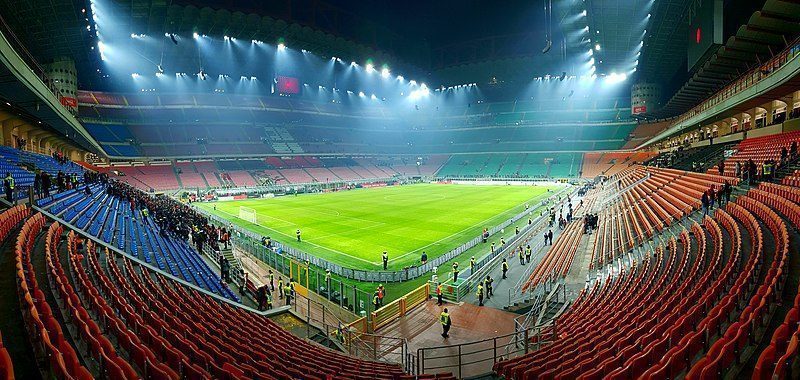San Siro has been the backdrop for many historic moments in Italian football. The recent decision by the Italian Heritage Authority to proceed for the demolition of the stadium is being lamented by football romantics.
Built in 1926, San Siro stadium derives its name from the San Siro district, three miles away from Milan. It originally had four separate stands. It hosted three football matches in the 1934 World Cup, which Italy won. Originally owned by Milan, the ground was sold to the city in 1935. Ten years later, Inter joined Milan in playing their matches at San Siro, which, by this point, had been redeveloped to consist of one fully enclosed tier.
It experienced an expansion in the 1950s with an addition of the second tier. It hosted its first Europe Cup Finals in 1965. A 1-0 victory for Inter against Benfica. Inter remain the last club to have won the European Cup in their own ground. San Siro was officially renamed the Stadio Giuseppe Meazza in 1980 after the two-time World Cup winner who starred for both Milan and Inter. The third tier, its enormous roof, complete with red girders, and 11 cylindrical towers were added for the 1990 World Cup. It also hosted the final match of Roberto Baggio’s career in the 2003-2004 season.
Structural changes through ages
A gap between the east side’s second-tier and roof gives way to a spectacular view of Milan from the third tier of the west stand. On a sunny day, one can see a glimpse of a shining Madonnina statue perched atop Milan’s famous Duomo cathedral. Compared to the traditional British grounds of the time, it looked like a stadium from another planet.
However, one cannot call San Siro a football utopia. It is not in pristine condition and many visiting fans have seen its uglier side. The first tier behind the goals was the designated section for visiting supporters, leaving them in the firing line of locals who were keen to test their missile-throwing skills. Various objects and liquids were thrown on guests before the decision was taken to relocate away supporters in the third tier. Although safer, the view from the higher tier can be significantly hampered by the Perspex screens running across the front.
Despite the legitimate financial, logistic and structural concerns, football fans are upset about the proposed demolition. Such proposals take a long time to be greenlighted, so there’s perhaps still some hope.
Click here to read more on the stadium, log on to The Guardian.

